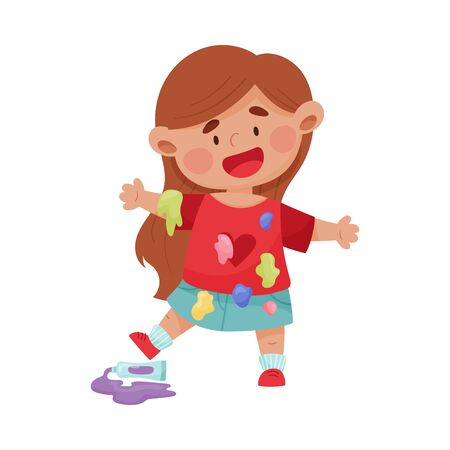Introduction to Early Developmental Milestones
The first year of your babys life is filled with exciting changes, from their very first tummy time to the moment they start crawling across your sitting room floor. Understanding these early developmental milestones can help you support your child’s physical growth and overall wellbeing. For British parents, knowing what to expect and how to encourage healthy progress is key, especially as the NHS and local health visitors often highlight the importance of early activity in building strength and coordination. Below is an overview of key physical milestones during a baby’s first year, along with practical tips rooted in UK guidance for supporting your little one at every stage.
2. The Importance of Tummy Time
Tummy time is a foundational activity for your baby’s muscular development and sets the stage for later milestones such as rolling, sitting, and crawling. By placing your baby on their tummy while they are awake and supervised, you help strengthen the muscles in their neck, shoulders, arms, and back. This activity also encourages motor skills and prevents the development of flat spots on the back of the head (positional plagiocephaly), which can occur if babies spend too much time lying on their backs.
Why Is Tummy Time Crucial?
From a nutritional and developmental perspective, tummy time stimulates your baby’s core strength and coordination. The act of lifting their head and moving their limbs against gravity helps them develop body awareness and prepares them for more complex movements like crawling. In addition, regular tummy time supports visual and sensory development as babies explore their surroundings from a new angle.
How to Incorporate Tummy Time Safely at Home
For British families, integrating tummy time into your daily routine can be simple with a few practical strategies:
| Tip | Description |
|---|---|
| Start Early | Begin tummy time as soon as your baby comes home from hospital – just a few minutes at a time, 2-3 times per day. |
| Use a Play Mat or Blanket | A soft play mat or clean blanket in your living room works well – no need for special equipment. |
| Join In | Lie down facing your baby to encourage interaction; singing nursery rhymes or making funny faces keeps them engaged. |
| Time It Well | Avoid tummy time right after feeds to prevent discomfort; aim for when your baby is alert but content. |
| Make It Routine | Add tummy time after nappy changes or before bath time so it becomes part of your everyday schedule. |
Safety Considerations for UK Households
Always supervise tummy time closely and ensure the surface is safe—avoid sofas or beds where there’s a risk of rolling off. If you have pets or older siblings, make sure they’re kept at a gentle distance during these sessions. Remember that every baby develops at their own pace; celebrate small achievements and gradually increase tummy time duration as your child gets stronger. If you have concerns about your baby’s physical development, consult your GP or health visitor for advice tailored to your family’s needs.

3. Signs Your Baby is Ready to Roll Over
Rolling over is an exciting milestone in your baby’s early development, bridging the gap between tummy time and more independent movement. For parents across the UK, recognising when your little one is preparing to roll can help you support them safely and confidently. Below, we highlight some of the most common indicators that your baby may be ready to roll over, along with practical tips on how to encourage this milestone at home.
Common Signs Your Baby is Preparing to Roll Over
| Sign | Description | Typical Age Range |
|---|---|---|
| Increased Head Control | Your baby can lift and hold their head steadily during tummy time, showing growing neck and upper body strength. | 2-4 months |
| Pushing Up on Arms | Bub begins pressing up onto their forearms or even straightening elbows when placed on their front. | 3-5 months |
| Rocking Side-to-Side | You may notice your little one shifting weight from side to side or swinging their legs in preparation for rolling. | 4-6 months |
| Kicking Legs with Purpose | Strong, purposeful kicking while lying down helps build core muscles needed for rolling motion. | 3-6 months |
| Toy Reaching and Grabbing | Reaching across the body for toys or objects encourages natural twisting and rolling movements. | 4-6 months |
How UK Parents Can Encourage Rolling Over Safely
- Create a Safe Play Space: Lay down a soft mat or blanket on the floor, ensuring there are no hazards nearby. Avoid raised surfaces like beds or sofas where falls could happen.
- Tummy Time Every Day: Encourage regular tummy time sessions when your baby is awake and supervised, gradually increasing duration as they grow stronger.
- Use Engaging Toys: Place colourful British-themed toys (like a cuddly Paddington Bear or a soft Union Jack rattle) just out of reach to motivate reaching and rolling.
- Get Down on Their Level: Lie beside your baby and gently demonstrate rolling motions, offering lots of encouragement and smiles as they try new movements.
- Avoid Overbundling: Dress baby in comfortable layers suitable for the UK climate; bulky clothing can restrict movement and hinder rolling practice.
- Praise Efforts: Celebrate small successes with claps, cheers, or singing a favourite nursery rhyme—positive reinforcement goes a long way!
When to Seek Advice?
If your baby shows no signs of attempting to roll by six months, or if you have concerns about their motor development, consult your health visitor or GP for reassurance and guidance tailored to your family’s needs.
4. Reaching for Objects: Building Coordination
As your baby moves from tummy time to crawling, one of the most exciting milestones is their growing ability to reach for and grasp objects. This stage is not just adorable to watch – it’s crucial for developing hand-eye coordination, fine motor skills, and cognitive growth. By reaching out for toys, rattles, or even your fingers, babies begin to understand cause and effect, distance, and object permanence.
Why Reaching Matters
When babies attempt to grab items within their sight, they’re actively practising coordination between what they see and how they move their arms and hands. This effort strengthens the small muscles in their fingers and hands, laying the foundation for future skills like self-feeding and writing. Additionally, these activities stimulate cognitive development as babies learn about shapes, textures, and sounds through exploration.
Recommended British Toys & Activities
In the UK, a variety of classic and modern toys are perfect for encouraging reaching and grasping. Here’s a helpful table highlighting some popular options:
| Toy/Activity | Description | Developmental Benefit |
|---|---|---|
| Soft Cloth Books | Brightly coloured books with different textures (e.g., Lamaze Freddie the Firefly) | Sensory stimulation; encourages reaching and turning pages |
| Wooden Rattles | Eco-friendly British brands like Bigjigs or Le Toy Van offer graspable rattles | Promotes grip strength; introduces sound awareness |
| Tummy Time Mirrors | Safe, shatterproof mirrors (e.g., Early Learning Centre) | Encourages visual tracking and reaching towards reflections |
| Stacking Rings | Classic rainbow rings or wooden stacking towers | Improves hand-eye coordination; introduces size concepts |
| Play Gym Mats | Mats with hanging toys (such as Mamas & Papas Playmat) | Bilateral movement; motivates babies to reach in different directions |
Home Activities to Try
You don’t always need specialist equipment—simple household items can be just as effective. Try placing safe kitchen utensils like wooden spoons slightly out of reach during tummy time or use colourful scarves that rustle when touched. Sing traditional nursery rhymes such as “Wind the Bobbin Up” while encouraging your little one to reach for your moving hands, making learning both fun and familiar.
Top Tips for Parents:
- Always supervise playtime closely to ensure safety.
- Rotate toys regularly to maintain interest.
- Praise every attempt at reaching or grasping—positive reinforcement builds confidence.
Nurturing your baby’s desire to reach for objects is a wonderful way to support their overall development. With a blend of British-inspired toys and creative home activities, you’ll be helping your little one master this important milestone on their journey from tummy time to crawling.
5. The Journey from Sitting to Crawling
As your little one moves beyond tummy time, the next exciting step is learning to sit and eventually crawl. This journey involves several milestones, each supporting your baby’s development in unique ways. Here’s how you can support your child through this crucial phase while keeping your British home safe and baby-friendly.
Progression from Supported Sitting to Crawling
Babies typically start by sitting with a bit of help—perhaps propped up with cushions or gently supported on your lap. Over time, their muscles strengthen and their balance improves, allowing them to sit independently for longer periods. Once they master sitting, many babies start to rock back and forth on all fours—a sign that crawling isn’t far off!
| Milestone | Typical Age Range | What to Expect |
|---|---|---|
| Sitting with Support | 4-6 months | Baby can sit when supported by pillows or an adult. |
| Sitting Independently | 6-8 months | Baby sits without help, uses hands for balance. |
| Crawling Preparation (Rocking/Planking) | 7-9 months | Baby rocks on hands and knees, may move backwards first. |
| Crawling Forward | 8-10 months | Baby moves forward confidently across the floor. |
Creating a Safe Play Space in Your British Home
The classic British home—with its fireplaces, stairs, and perhaps a few beloved pets—can pose challenges as your baby becomes more mobile. Here are some practical tips:
- Clear the Floor: Remove small objects, electrical cords, and anything breakable from the floor level.
- Soft Landing: Use a clean play mat or rug to cushion any tumbles—particularly useful if you have hard floors like wood or tiles commonly found in UK homes.
- Stair Safety: Install stair gates at both the top and bottom of stairs, especially in period properties where steps may be steeper or narrower.
- Corners & Edges: Fit corner protectors on coffee tables and hearths; these are often at crawling height!
- Keep It Cosy: In winter months, ensure the play area is free from draughts and not too close to radiators or open fires.
- Pet Precautions: If you have dogs or cats, create separate zones during active playtime to keep everyone safe and happy.
Nutritional Tip: Supporting Mobility Milestones
A balanced weaning diet rich in iron, vitamin D, and healthy fats supports muscle growth and energy needs during this active stage. Offer a variety of age-appropriate finger foods such as soft-cooked vegetables, cheese cubes, and strips of toast—perfect for practising pincer grip while sitting up!
6. When to Seek Support: Recognising Developmental Delays
As your little one progresses from tummy time to crawling, it’s natural to compare their development with peers. However, every baby develops at their own pace. Still, it’s important for parents and carers in the UK to recognise when a delay might warrant further support. Early intervention can make a significant difference, so knowing when to consult your health visitor or GP is vital.
Key Milestones: When to Be Concerned
| Milestone | Expected Age Range | When to Seek Advice |
|---|---|---|
| Lifts head during tummy time | By 3 months | Not lifting head by 4 months |
| Rolls over (front to back) | By 6 months | No rolling by 7 months |
| Sits without support | By 8 months | Cannot sit independently by 9 months |
| Crawling or moving towards objects | By 10 months | No attempts at movement by 12 months |
| Babbles or makes sounds | By 6-9 months | No vocalisation by 9 months |
NHS and Local UK Resources for Support
If you notice your baby has not reached these milestones within the expected age ranges, don’t hesitate to reach out. In the UK, health visitors are a key part of your child’s care team—they can provide guidance, assessment, and refer you to specialist services if needed. You can also speak directly with your GP for concerns that require medical evaluation.
- Health Visitor: Contact them through your local NHS trust—details are usually in your baby’s Red Book (Personal Child Health Record).
- Your GP: Book an appointment if you’re worried about your baby’s physical or communication development.
- NHS Start4Life: Offers online resources and advice for early years milestones (Start4Life Baby Development).
- Family Hubs & Children’s Centres: Find local support groups and workshops for parents.
- SEND Local Offer: For children with additional needs, each council provides information on special educational needs and disability (SEND) services.
The Importance of Early Intervention
If you have any concerns about your baby’s progress—from tummy time struggles to delays in crawling—trust your instincts. Early support can help address any underlying issues and give your child the best start. Remember, in the UK you’re never alone; there’s a wealth of professional advice and community support available through the NHS and local resources.
7. Nutrition and Physical Development
Nutrition plays a vital role in supporting your baby’s muscle and bone development as they move from tummy time to crawling. Providing age-appropriate foods, as recommended by the UK’s dietary guidelines for infants, ensures your little one gets the essential nutrients needed for healthy growth.
The Importance of Early Nutrition
During the first year, your baby experiences rapid physical changes. Proper nutrition fuels this growth, helps build strong bones, and supports muscle development crucial for achieving milestones like rolling over, sitting up, and crawling.
Key Nutrients for Babies
| Nutrient | Role in Development | Main Sources (UK Guidelines) |
|---|---|---|
| Calcium | Supports bone strength and growth | Breast milk, infant formula, later: yoghurt, cheese |
| Protein | Builds muscle tissue and overall growth | Breast/formula milk, later: eggs, lentils, fish, poultry |
| Iron | Essential for energy and brain development | Fortified cereals, pureed meats, beans, dark green vegetables |
| Vitamin D | Aids calcium absorption for bone health | Supplement drops (as per NHS advice), oily fish when weaning begins |
| Zinc & Magnesium | Support cell growth and muscle function | Poultry, beans, whole grains (from 6 months) |
Introducing Solids: The Weaning Journey in the UK
The NHS recommends introducing solid foods around 6 months of age while continuing breast or formula feeding. Begin with smooth purees of vegetables and fruits before gradually progressing to mashed and finger foods. Offer a variety of flavours and textures to encourage acceptance of new foods while supporting oral motor skills—important for speech development as well as eating.
Safe Practices During Weaning:
- Avoid added salt and sugar: Babies’ kidneys can’t process excess salt; sugar increases risk of tooth decay.
- Allergen introduction: Introduce common allergens one at a time from 6 months (e.g., peanuts, eggs) as per NHS guidance.
- Sufficient hydration: Offer sips of cooled boiled water with meals from 6 months onwards.
- Continue milk feeds: Breast milk or first infant formula remains a main source of nutrition during the first year.
Nourishing Growth Through Movement Milestones
A balanced diet tailored to UK guidelines not only supports your baby’s immediate energy needs but also lays the foundation for healthy movement patterns. The right nutrition helps them push up during tummy time, roll confidently, and eventually crawl with strength and coordination. For personalised advice, always consult your health visitor or GP to ensure your baby’s diet is meeting their unique needs as they progress through these exciting milestones.


